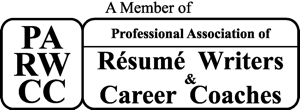LinkedIn has become the most prolific tool in the recruiter's arsenal. There's something like 300 million users now, and if you're a professional anything, it's likely you have a LinkedIn profile. Other than just putting up job postings, how do Recruiters use LinkedIn to find candidates for jobs?
Companies pay for it. With real money. Your subscription as an individual is free unless you opt to upgrade it. You may think that your visibility is limited to just those individuals to whom you're connected - wrong, Bubba. Companies pay some serious coin to buy a Corporate Subscription seat that allows them to find almost anybody with a LinkedIn page.
The Corporate seat gives the company the ability to perform complex searches, for things on your page, including:
Keywords
Job Title
Geography within x miles of a zip code
Level of Individual (Manager, Director, Vice President, etc.)
And many, many other things
The Recruiter then searches through the results and builds a list of people to contact about a job. They then can create a form letter to send to the people on the list to gauge interest in a position and to request a resume. LinkedIn users can turn off the ability to receive messages, but most people don't.
The Corporate LinkedIn seat system then tracks any communications that they may have made with you through LinkedIn. Recruiters within a company can share their seat, so that the other recruiters can see what's shaking with your candidacy. I should note, this is confidential only to the company who has the seat, and can't be seen by other companies.
The bad news is that there isn't much privacy out there. The good news is, if you are a passive candidate, and you've got a marketable background, it's not too difficult for recruiters to find you. Here's some tips for getting noticed by Recruiters using LinkedIn.
Take the text from your resume and copy the details into your LinkedIn profile. It will make you more searchable through keywords. It's a socially acceptable way to put your resume out on the internet without making your current employer panic (too much).
Approach your LinkedIn profile as you would your resume:
Highlight accomplishments, not just duties
Front-load the most important information, including a compelling "Summary" section with a clear summary of who you are professionally
You can solicit professional recommendations for each job from peers and managers. If people are willing to give them, ask for them. You can always decide whether or not to make the recommendation public. This helps lend some credibility.
Make sure your skill keywords are reflected in your profile somewhere. Are you an expert in Microsoft Project? Include it. Have experience in Compensation and Benefits? Include it.
How many connections you have doesn't matter to companies who buy a Corporate subscription. They can still find you. But there are some companies out there who don't pay for it, but still want to find you. In this case, the more connections you have increases your visibility. Definitely an incentive to keep building your LinkedIn network.
Scott Singer is the President and Founder of Insider Career Strategies Resume Writing & Career Coaching, a firm dedicated to guiding job seekers and companies through the job search and hiring process. He is a Human Resources professional and staffing expert with almost two decades of in-house corporate HR and staffing firm experience, and is a Certified Professional Resume Writer (CPRW) and Certified Professional Career Coach (CPCC).
Insider Career Strategies provides resume writing, LinkedIn profile development, and career coaching services, including a free resume review. You can email Scott Singer at scott.singer@insidercs.com, or via the website, www.insidercs.com.



